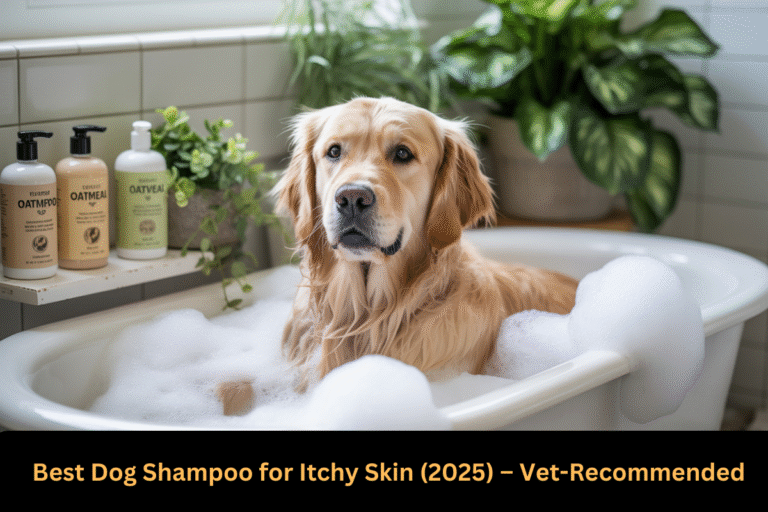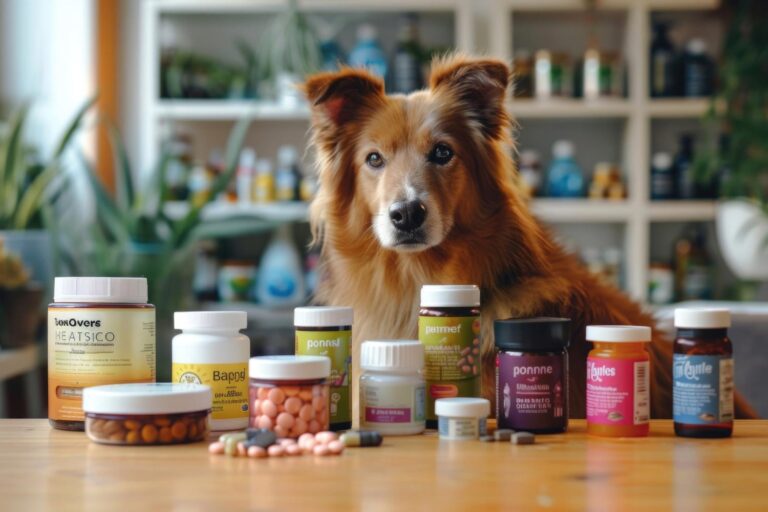The foundation of a dog’s long-term health begins with its diet. Whether you’re raising a playful puppy, an energetic adult, or a wise senior, what you feed your dog affects every part of their well-being—from muscle development to immune system strength. But with conflicting advice on the internet and aisles full of commercial options, the real question is: what’s truly better—raw dog food or kibble?
A Quick Overview: Kibble vs Raw Dog Food
On one hand, you have kibble, the traditional commercial option—convenient, affordable, and widely recommended by pet food manufacturers. On the other hand, there’s the growing trend of feeding dogs a raw food diet, inspired by ancestral eating habits that emphasize raw meat, bones, and organs.
So, how do these two diets really compare?
What is a Raw Dog Food Diet?

Common Ingredients in a Raw Dog Food Diet
Raw diets typically include:
- Muscle meat (often still on the bone)
- Organ meats like liver and kidney
- Raw bones
- Eggs
- Fresh fruits and vegetables
- Yogurt or dairy (optional)
Some versions of the diet, like the BARF (Biologically Appropriate Raw Food) model, aim to mirror what dogs would naturally eat in the wild.
Nutritional Benefits of Raw Feeding
Proponents of raw feeding report:
- Shinier coats
- Cleaner teeth
- Higher energy levels
- Smaller, less smelly stools
- Fewer allergy symptoms
These benefits stem from the high protein content, absence of artificial additives, and better nutrient bioavailability in fresh food.
Risks Associated With Raw Dog Food
While benefits abound, feeding raw isn’t risk-free. Some common concerns include:
- Bacterial contamination (Salmonella, E. coli)
- Nutritional imbalances if not properly formulated
- Risk of choking or internal injury from bones
- Difficulty in storing raw meat safely
What is Kibble?

How Kibble is Manufactured
Kibble is made through a process called extrusion, where ingredients like meat meals, grains, vegetables, and vitamins are mixed into a dough, cooked at high heat, and shaped into pellets.
Ingredients Commonly Found in Commercial Kibble
Typical kibble includes:
- Rendered meat meals
- Corn, wheat, or soy
- Preservatives like BHA/BHT
- Flavor enhancers
- Synthetic vitamins and minerals
Some premium brands use fewer fillers and more meat-based ingredients.
Health Considerations with Kibble
While convenient, kibble can sometimes:
- Contribute to dental plaque and tartar
- Trigger allergies due to grains or additives
- Result in obesity if overfed or poorly formulated
However, many dogs live long, healthy lives on quality kibble from reputable brands.
Raw Dog Food Diet vs Kibble: Nutritional Showdown
Protein Content and Bioavailability
Raw diets often contain significantly higher amounts of fresh, digestible protein. This is crucial for muscle repair, immune function, and hormone production. In contrast, kibble relies heavily on processed proteins and by-products that may not be fully absorbed.
Carbohydrate Levels and Digestibility
Kibble often includes 30-60% carbohydrates—far more than dogs require. Raw diets are naturally low-carb, reducing the risk of weight gain and insulin resistance.
Vitamins and Mineral Absorption
Raw foods provide many natural vitamins and enzymes that can be destroyed during kibble processing. However, raw feeding requires careful planning to avoid deficiencies, especially in calcium, phosphorus, and zinc.
Impact on Coat, Skin, and Dental Health
A raw food diet tends to improve skin conditions and coat shine due to better fatty acid profiles. Chewing raw bones may also reduce plaque buildup better than kibble.
Cost Comparison: Is Raw More Expensive Than Kibble?
Feeding raw generally costs more—especially if you opt for pre-made commercial raw options.
On average:
- Raw diet: $2.50–$5.00/day for a medium-sized dog
- Kibble: $1.00–$2.00/day for the same dog
However, some owners find the long-term health benefits of raw feeding offset frequent vet bills due to poor nutrition.
Convenience and Storage Needs
Kibble is shelf-stable, easy to store, and quick to scoop. Raw food, on the other hand, requires refrigeration or freezing, thawing before meals, and more cleanup. For busy dog owners, kibble wins in convenience.
Vet Opinions: What Do Professionals Recommend?
Veterinarians are divided. Some advocate for commercial raw diets formulated by veterinary nutritionists, while others caution against raw feeding due to hygiene concerns. The best diet, according to most experts, is one that is balanced, safe, and suits your dog’s individual needs.
Raw Dog Food vs Kibble: Behavioral and Energy Level Differences
Diet doesn’t just affect physical health—it also shapes your dog’s behavior and energy levels.
Dogs on a raw food diet often exhibit:
- Increased alertness and stamina
- More enthusiasm during playtime
- Better digestion leading to fewer mood swings or irritability
In contrast, some dogs on high-carb kibble may experience energy spikes followed by lethargy. Owners sometimes report hyperactivity or sluggishness due to sugar and filler content in certain commercial kibble brands.
Transitioning from Kibble to Raw: What to Expect
Steps to Transition Safely:
- Consult a vet or canine nutritionist – especially important if your dog has health conditions.
- Start slow – Mix 25% raw with 75% kibble initially.
- Increase raw ratio gradually over 7–14 days.
- Watch for signs of discomfort – Diarrhea or vomiting may indicate too fast a transition.
Transitioning too quickly or without proper planning can lead to digestive upset or nutritional imbalances.
Which Is Better for Puppies, Seniors, and Allergic Dogs?
Puppies:
Puppies need high protein, calcium, and phosphorus for bone growth. A balanced raw diet can be beneficial but must be properly formulated.
Senior Dogs:
Older dogs often have slower metabolisms and weaker teeth. Soft raw foods may be easier to chew and digest. However, seniors may also benefit from fortified kibble made for joint support.
Allergic Dogs:
Many dog owners switch to raw food after discovering food allergies triggered by kibble ingredients like wheat, corn, or artificial preservatives. A raw diet, with limited and identifiable ingredients, can help reduce inflammation and itching.
Common Myths Debunked
“Raw Food is Always Dangerous”
Fact: While raw food carries some risks, so does improperly stored kibble. Proper handling and sourcing can minimize raw food dangers. Many commercial raw brands follow strict food safety protocols.
“Kibble Cleans Teeth”
Fact: This is misleading. Kibble does not prevent tartar buildup as effectively as raw bones or regular brushing. In fact, many dogs still require professional dental cleanings while on a kibble diet.
Real Dog Owner Experiences
| Experience | Kibble | Raw Food |
|---|---|---|
| Stool Volume | Large and frequent | Smaller, less frequent |
| Coat Quality | Dull or greasy | Shiny and soft |
| Allergy Symptoms | Often worsened | Frequently reduced |
| Dental Health | Mixed results | Cleaner teeth (with bones) |
| Appetite | Picky eaters common | Enthusiastic eaters |
Expert Tips for Feeding Dogs Raw or Kibble Safely
- Always wash hands and surfaces after handling raw meat.
- Store food properly: Freeze raw and keep kibble sealed in airtight containers.
- Choose AAFCO-compliant commercial foods for balanced nutrition.
- Supplement if needed: Raw feeders may need to add calcium, fish oil, or probiotics.
Environmental Impact of Dog Food Choices
Feeding your dog affects the planet too.
Kibble is often made with by-products and may have a smaller carbon footprint per pound. Raw diets, especially those using human-grade meats, may contribute to higher emissions due to intensive farming.
Eco-conscious owners might explore sustainable raw options like pasture-raised meat or insect-based protein supplements.
Final Verdict: Which Diet Should You Choose?
| Raw Food | Kibble | |
|---|---|---|
| Pros | High nutrient quality, fewer additives, better coat and stool quality | Convenient, shelf-stable, cost-effective |
| Cons | Time-consuming, expensive, potential for bacteria | Fillers, allergens, less bioavailable nutrients |
Choose raw if you’re able to invest time in safe preparation and want natural, fresh nutrition.
Stick with kibble if convenience and cost are priorities, especially with high-quality grain-free or holistic brands.
Many pet owners now opt for a hybrid approach, mixing raw with kibble to balance benefits and risks.
Frequently Asked Questions
Can I feed both kibble and raw food together?
Yes, but it’s best to feed them in separate meals (e.g., raw in the morning, kibble at night) to aid digestion.
Is raw food really more nutritious than kibble?
Generally, raw diets offer more bioavailable nutrients, but only if balanced correctly. Poorly formulated raw diets can lead to deficiencies.
Are there commercial raw dog food options?
Yes, many companies offer pre-packaged raw diets that are complete, frozen, and AAFCO-certified, reducing the risks of DIY raw feeding.
How do I know if my dog has food allergies?
Watch for signs like itching, paw licking, ear infections, and chronic diarrhea. A limited ingredient or elimination diet (often raw) can help identify allergens.
Is feeding raw more expensive in the long run?
Upfront costs are higher, but some owners believe they save money on vet bills and medications due to fewer health issues.
How can I store raw dog food safely?
Keep it frozen, thaw only what you need, and refrigerate leftovers for up to 48 hours. Use stainless steel bowls for feeding.
Conclusion
Choosing between a raw food diet for dogs vs kibble is a personal decision influenced by your lifestyle, budget, and your dog’s unique needs. While raw feeding offers many health benefits, kibble remains a practical and affordable option—especially when you choose premium brands. The best choice? One that prioritizes your dog’s health, safety, and happiness.
For deeper insights into raw diets, check our guide on whether raw dog food is good or bad. It covers safety, benefits, and risks.



![Is Raw Dog Food Good or Bad? [Vet Insights]](https://tailwaves.com/wp-content/uploads/2025/07/2151988907-768x419.webp)
![Is Raw Dog Food Good or Bad? [Vet Insights]](https://tailwaves.com/wp-content/uploads/2025/07/2151988907-300x164.webp)
3 Comments